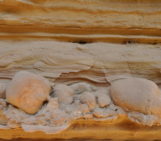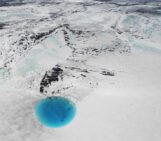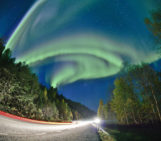
In 2010 EGU held our first annual Photo Competition at the General Assembly in Vienna. Since then hundreds of photos have been shared on imaggeo by geoscientists and researchers just like you, with a lucky few being selected each year to be highlighted during the meeting and voted on by our members.
These images can be of anything to do with geology or geoscience – we get many beautiful landscape images, but you can also upload laboratory images, fieldwork images, hand samples or microscope images; even videos! The winners are awarded a free registration to the EGU General Assembly the following year and you can share an image taken at any time – they don’t have to be just from the last year – we even accept historical images, as long as you have the rights to share them! For more information visit the 2022 Photo Competition announcement page.
This week’s Imaggeo on Mondays highlights the 2010 Photo Competition runner up: a stunning photo of the Grand Prismatic Spring in Yellowstone National Park in the USA taken by David Mencin.
This is the Grand Prismatic Spring in the Midway Geyser Basin, Yellowstone National Park. It is the third largest hotspring in the world and the largest found in the United States, with a maximum diameter of about 90 m. It discharges roughly 2.5 cubic metres of mineral-rich water per minute, which flows down the rocky terraces evenly on all sides. Hotsprings are rich in minerals because warmer water is capable of holding more dissolved solids than colder water – and the water here can reach 87 °C in the centre of the spring!
Little can survive these high temperatures, though there are strains of thermophyllic (heat loving) bacteria and algae (chemoautotrophs and heteroautotrophs) that thrive in these conditions! There is more life found at the edges of the spring where waters are cooler. Rather than producing energy from the sun, as is the case for photosynthetic bacteria, chemoautotrophic bacteria oxidise minerals in the spring-water to produce energy. Heteroautotrpohs, on the other hand, use both photosynthesis and chemoautotrophy to obtain their energy.
These bacteria are also responsible for the bright rings of colour that surround the spring. Coating the rock in large bacterial mats; their energy-harnessing pigments dictate the colours that surround the water. If the bacteria contain more chlorophyll, the mats will be more green in colour and if they contain more carotenoids, the bacterial carpet will be more of an orangey brown.
Description by Sara Mynott.
Imaggeo is the EGU’s online open access geosciences image repository. All geoscientists (and others) can submit their photographs and videos to this repository and, since it is open access, these images can be used for free by scientists for their presentations or publications, by educators and the general public, and some images can even be used freely for commercial purposes. Photographers also retain full rights of use, as Imaggeo images are licensed and distributed by the EGU under a Creative Commons licence. Submit your photos at http://imaggeo.egu.eu/upload/.




